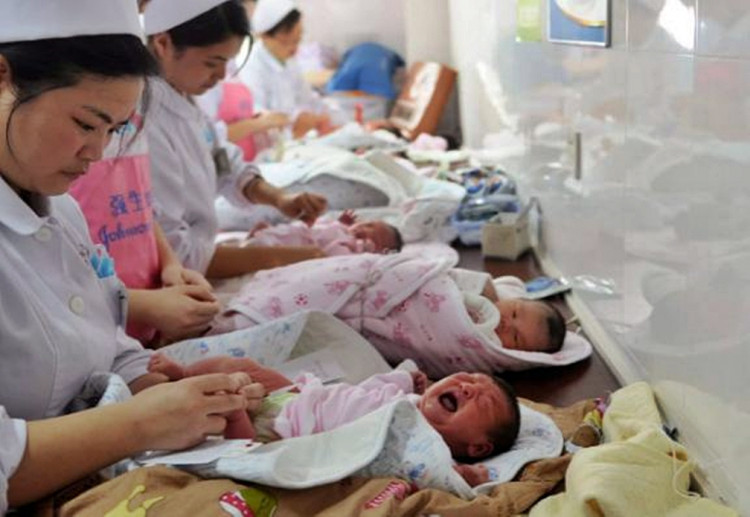That China is well and truly in the grip of a "demographic crisis" will be confirmed when the central government releases data for 2018 affirming the number of babies born in China in 2018 will have plummeted to its lowest level since 2000.
Data from the National Bureau of Statistics (NBS) to be issued later this month will show births throughout China falling below 15 million despite the central government's relaxation of its one-child policy and the introduction of the two-child policy in 2016.
State-owned tabloid Global Times, which reported on this crisis, said another problem facing the government is the rising number of the elderly, which raises fears of a premature economic stagnation because there won't be enough young, working-age people to support this vast army of retirees.
The Global Times story said 2018 "will be remembered as a historical turning point for the Chinese population." It said the year will herald the unmistakable start of a "demographic crisis" that threatens economic growth and social stability.
It noted the final figure for births in 2018 will fall below 15 million, or more than two million fewer than the actual number of 17.2 million births in 2017. This compares to previous government estimates of up to 20 million births.
Births in 2016 rose to 17.9 million from 16.6 million in 2015 following the introduction of the two-child policy, but the acceleration was short-lived as births fell to 17.2 million in 2017.
One demographer estimates the number of births across China might sink to only 14 million if the 20 percent fall is replicated nationwide. Such a large reduction in births will have far-reaching impacts on China's economic and social development, including weaker demand for property in the future.
A sharp drop in new births is probably the beginning of a long new era, during which population will see a contraction.
Data released by local governments all confirm a considerable drop in births. There were a mere 64,753 births in the first 11 months of 2018 in Liaocheng, Shandong, which is one of China's most populous provinces. This represented an unacceptable 26 percent plunge from the same period in 2017.
In Qingdao, another city in Shandong, births between January and November plummeted 21 percent to 81,112 year-on-year, according to the local government.
In August, the provincial government of Shaanxi in northwest China again called on Beijing to abolish all birth limits so Chinese couples can have as many children as they want while reversing a dangerous drop in the birth rate.
The year 2018 will be remembered as a historical turning point for the Chinese population, said a paper saying China may have started to see a long-lasting fall in its population. The paper also pointed out that China's population has started to fall while aging problems have accelerated. It doesn't help that China's economic vitality has weakened.
"A great nation, which once upon a time accounted for nearly a third of the world's total population, is gradually degenerating into a small group of the old and the weak thanks to wrong demographic policies," said the paper written by Yi Fuxian, a researcher at the University of Wisconsin-Madison and Su Jian, an economist at Peking University.






